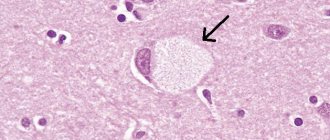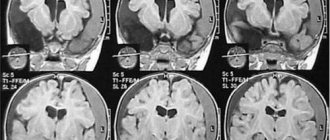What kind of disease is this
Cyclothymia is a mild form of manic-depressive psychosis. Its symptoms are less pronounced and it progresses more easily.
Elation constantly alternates with periods of depression. At the same time, the patient also experiences other cyclic changes associated with appetite, sociability, activity and a sense of self-confidence.
Mood swings occur regardless of any factors. Sometimes they are observed in stressful situations. The disease occurs more often in women in autumn and spring. If left untreated, this mental disorder can become chronic and lead to psychosis.
Patients with cyclothymia should not be entrusted with work related to repairing and driving a car, or raising children. Having this disease can be an obstacle to obtaining a driver's license. If you really want to drive, you need to remove or revise the diagnosis.
Peculiarities
Most often, the disorder affects those people whose close relatives have a history of bipolar disorder. In most cases, cyclothymia begins to show its symptoms during adolescence. It is precisely because of the time of onset that the disorder is not diagnosed in a timely manner, since many attribute mood swings to natural manifestations of the juvenile period. However, if cyclothymia is left without proper correction, the disorder takes a chronic course or develops into more serious illnesses, for example: manic-depressive psychosis or recurrent depression.
Symptoms of the phases of mania and depression can appear in waves with a rhythmic increase and decrease in emotional fluctuations. Quite often, long periods of intermission are observed during cyclothymia. Mood fluctuations in people suffering from cyclothymia do not depend on environmental circumstances, although in some cases an unexpected change in phase to the opposite episode can be provoked by psychogenic factors. The cycles with this disease are short, mood changes can occur several times during the day, without following a certain pattern.
According to official data, the prevalence of cyclothymia reaches 5% among all emotional disorders. However, due to the fact that the manifestations of the disease in many patients are not intense and episodic in nature, and the symptoms do not require significant adjustments in their usual lifestyle, a fairly large group of people do not seek psychiatric help at all. Therefore, it can be assumed that the actual prevalence of cyclothymia in the human population is significantly higher than the stated values.
Symptoms
Signs of cyclothymia depend on the phase of the disease. There are only two of them:
- Manic. Manifested by euphoria, psychomotor agitation, hyperactivity. A person is ready to perform feats, he is very mobile.
His speech is fast and sometimes incoherent. He cannot concentrate, he grabs onto several things at once. The patient does not feel tired and does not understand that he has mental problems. If they try to calm him down, he expresses aggression. - Depressed. This phase comes suddenly, the patient suddenly becomes sad, withdrawn and taciturn, although only recently he strived to do great things. He has problems with sleep, apathy, fatigue, headaches, and negative thoughts.
An incomprehensible tension inside causes constant fears and anxiety. A person begins to think about his meaningless existence and even suicide. The depressive phase requires urgent help from a specialist, otherwise the consequences can be dire.
The patient often violates labor discipline, commits embezzlement, is able to enter into an illegal transaction and even commit a crime.
Persons suffering from cyclothymia who have committed offenses are considered sane if at that time they were not in a state of psychotic attack. In case of too frequent manifestations of the disorder, the patient may be declared insane (p. 21 of the Criminal Code of the Russian Federation).
Causes
The main reason for the development of cyclothymia is a hereditary factor. Among the patient's relatives there are always people with depressive disorders.
The provoking factor for the development of the disease is improper upbringing of the child , namely:
- humiliation of him;
- lack of a general scheme for personality formation;
- constant criticism.
Cyclothymia is often observed in adolescents with sudden mood swings and strong feelings about unrequited love. The child may be in an angry state, commit rash acts, and communicate rudely. It happens that a son left home, disappeared for a long time and made his parents worry. This disorder is associated with hormonal imbalance and requires careful monitoring of the teenager. The indifferent attitude of others can lead to dire consequences.
Cyclothymia occurs in people who suffer from instability of the emotional sphere due to hyperactivity of hydrocortisone (a glucocorticoid hormone of a steroid nature), as well as in those who have drug or alcohol addiction.
Bipolar disorder (cyclothymia)
Bipolar disorder, like Cyclothymia, is characterized by a sharp change in emotional background from depression to highly elevated mood. There is absolutely no reason for such disorders. Some of the distinguishing characteristics of bipolar disorder include:
- Pathological sleep disorder
- Lack of appetite
- Often having thoughts of suicide
- Adverse symptoms remain for a long period of time.
It is important to note that this disease is often caused by a genetic factor. If a close relative in the family suffered from this diagnosis, then the likelihood of direct relatives increases by 50%.
Test
There is a special test for cyclothymia online, which allows you to identify a person’s predisposition to a mental disorder. You can complete this study yourself by contacting a psychologist or finding one on the Internet.
The test helps determine the degree and phase of the disease and prescribe adequate treatment.
You must answer “yes” or “no” to questions related to specific behaviors. After self-checking, you can find an interpretation of the results and identify mental problems.
How is cyclothymia diagnosed?
Mood swings happen to everyone, and they do not always indicate a mental disorder. According to the diagnostic criteria, What Is Bipolar Disorder? According to the American Psychiatric Association, certain conditions must be met to make a diagnosis of cyclothymia. This is how they are described by Cyclothymia. Diagnosis and Treatment experts from the American Mayo Clinic.
- A person regularly has periods of depression, when everything is bad, everything is falling out of hand, nothing is interesting, nothing is wanted, followed by periods of energy, excitement, and a feeling of happiness. Then the attack of melancholy and apathy is repeated. And so on in a circle.
- Such mood swings have been occurring for at least two years.
- Over a two-year period, a person spends at least half of the time either in apathy or in a state similar to euphoria.
- A person either cannot remember periods without excitement or melancholy at all, or they last a short time - no longer than a couple of months.
- Symptoms are not related to substance use or any diagnosed medical condition.
Treatment
Treatment of the disease is similar to the treatment of manic depression. For moderate symptoms of cyclothymia, it is performed on an outpatient basis.
In case of suicidal thoughts and severe manifestations of depression, hospital treatment is required. The main groups of drugs used to treat cyclothymia include:
- Neuroleptics . Necessary to eliminate hallucinations and suppress aggression. They are used only for pronounced symptoms of the disease due to the large number of side effects and contraindications.
- Normotimics . Used to stabilize mood. Lithium salts help get rid of sudden changes in behavior.
- Antidepressants . Helps cope with anxiety, depression, and bad mood.
In severe cases, the patient is given drugs intravenously. This allows his condition to stabilize much faster.
In modern medicine phototherapy , which is the effect of light on serotonin metabolism. After all, our mood depends on this “happiness hormone”. Light therapy can speed up the effects of antidepressants and is suitable for any type of such disorder.
Observation by a psychiatrist is mandatory. The specialist gives the patient confidence that everything will be fine, helps him feel protected, and teaches him how to deal with mood swings.
To prevent relapses of the disease, it is recommended to adhere to the following rules:
- To refuse from bad habits.
- Maintain a healthy lifestyle and get proper rest.
- Visit a psychotherapist regularly.
- You should completely take the course of medications prescribed by your doctor.
It is very important to provide the patient with the support of others. A healthy atmosphere, a positive attitude and the help of loved ones will help restore common sense to a person.
Clinical picture of cyclothymia
Symptoms of cyclothymia are divided into two opposing groups: “good mood” symptoms and “bad mood” symptoms.
Symptoms of a good mood (hyperthymia phase) are manifested by energy, hyperactivity (personal, household, social), elevated mood, and increased performance. The patient is haunted by a feeling of constant well-being, which sometimes leads to an inadequate assessment of the environment. Sleep time is reduced. The clearly negative aspects of hyperthymia include familiarity, rude behavior, irritability, decreased concentration, and fussiness. Hypomania is a condition in which the above symptoms are more pronounced than during hyperthymia, but less so than during manic episodes.
Symptoms of bad mood (depression phase, dysthymia) are characterized by all the classic signs of ordinary depression, but they have a more subtle course:
- Long-term deterioration in mood;
- Decrease in interests in all areas;
- Deterioration of cognitive abilities;
- Decreased self-esteem and own capabilities;
- Physical inactivity, anxiety;
- Poor sleep at night and drowsiness during the day;
- Lack of appetite;
- The occurrence of false pain and other symptoms from internal organs (like somatoform reactions).
Cyclothymia, due to the peculiarities of the clinical picture, rarely comes to the attention of psychiatrists or psychotherapists. Very often, patients do not even suspect that they have this mental disorder, since it practically does not affect the quality of life, does not impair professional skills, and is not noticeable to others. Moreover, an episode of elevated mood (especially the hyperthymia phase) is very often perceived by a person as a period of complete well-being, which one should strive for.
Despite the relative harmlessness or even the imaginary positivity of cyclothymia, this condition is a mental disorder and requires adequate treatment. Otherwise, there is a high probability of progression of the disease up to the onset of bipolar affective disorder or other severe mental pathology.
Forecast
According to experts, the prognosis depends on the internal balance and emotional responsiveness of the patient, the form of the disease, and the typicality of symptoms. The more balanced and responsive a person is, the better the outcome will be. Signs of a poor prognosis include depression with schizophrenia-like manifestations, especially at a young age.
In combination with medication, psychotherapy can achieve good results within a month after the start of treatment. It will take at least 6 months to strengthen the effect.
Video:









